 | |
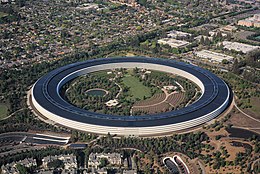
Apple Park in Cupertino, California, April 2018
| |
Formerly
|
|
|---|---|
| Public | |
| Traded as | |
| ISIN | US0378331005 |
| Industry | |
| Founded | April 1, 1976 |
| Founders | |
| Headquarters | 1 Apple Park Way, ,
U.S.
|
Number of locations
| 500 retail stores (2018) |
Area served
| Worldwide |
Key people
| |
| Products | |
| Services | |
| Revenue | |
| Total assets | |
| Total equity | |
Number of employees
| 132,000[2] (2018) |
| Subsidiaries |
|
Apple Inc. is an American multinational technology company headquartered in Cupertino, California, that designs, develops, and sells consumer electronics, computer software, and online services. It is considered one of the Big Four of technology along with Amazon, Google and Facebook.
The company's hardware products include the iPhone smartphone, the iPad tablet computer, the Mac personal computer, the iPod portable media player, the Apple Watch smartwatch, the Apple TV digital media player, and the HomePod smart speaker. Apple's software includes the macOS and iOS operating systems, the iTunes media player, the Safari web browser, and the iLife and iWork creativity and productivity suites, as well as professional applications like Final Cut Pro, Logic Pro, and Xcode. Its online services include the iTunes Store, the iOS App Store and Mac App Store, Apple Music, and iCloud.
Apple was founded by Steve Jobs, Steve Wozniak, and Ronald Wayne in April 1976 to develop and sell Wozniak's Apple I personal computer. It was incorporated as Apple Computer, Inc., in January 1977, and sales of its computers, including the Apple II, grew quickly. Within a few years, Jobs and Wozniak had hired a staff of computer designers and had a production line. Apple went public in 1980 to instant financial success. Over the next few years, Apple shipped new computers featuring innovative graphical user interfaces, such as the original Macintosh in 1984, and Apple's marketing commercials for its products received widespread critical acclaim. However, the high price tag of its products and limited software titles caused problems, as did power struggles between executives at the company. In 1985, Wozniak stepped away from Apple, while Jobs resigned and founded a new company—NeXT—with former Apple employees.
As the market for personal computers increased, Apple's computers lost share to lower-priced products, particularly ones that ran the Microsoft Windows operating system, and the company was financially on the brink. After more executive job shuffles, CEO Gil Amelio in 1997 bought NeXT to bring Jobs back. Jobs regained leadership within the company and became the new CEO shortly after. He began to rebuild Apple's status, opening Apple's own retail stores in 2001, acquiring numerous companies to create a portfolio of software titles, and changing some of the hardware used in its computers. The company returned to profitability. In January 2007, Jobs renamed the company Apple Inc., reflecting its shifted focus toward consumer electronics, and announced the iPhone, which saw critical acclaim and significant financial success. In August 2011, Jobs resigned as CEO due to health complications, and Tim Cook became the new CEO. Two months later, Jobs died, marking the end of an era for the company.
Apple is well known for its size and revenues. Its worldwide annual revenue totaled $265 billion for the 2018 fiscal year. Apple is the world's largest information technology company by revenue and the world's third-largest mobile phone manufacturer after Samsung and Huawei. In August 2018, Apple became the first public U.S. company to be valued at over US$1 trillion. The company employs 123,000 full-time employees and maintains 504 retail stores in 24 countries as of 2018. It operates the iTunes Store, which is the world's largest music retailer. As of January 2018, more than 1.3 billion Apple products are actively in use worldwide. The company also has a high level of brand loyalty and is ranked as the world's most valuable brand. However, Apple receives significant criticism regarding the labor practices of its contractors, its environmental practices and unethical business practices, including anti-competitive behavior, as well as the origins of source materials.
History
1976–1984: Founding and incorporation
Apple Computer Company was founded on April 1, 1976, by Steve Jobs, Steve Wozniak and Ronald Wayne. The company's first product was the Apple I, a computer single-handedly designed and hand-built by Wozniak, and first shown to the public at the Homebrew Computer Club. Apple I was sold as a motherboard (with CPU, RAM, and basic textual-video chips), which was less than what is now considered a complete personal computer. The Apple I went on sale in July 1976 and was market-priced at $666.66 ($2,935 in 2018 dollars, adjusted for inflation).
Apple Computer, Inc. was incorporated on January 3, 1977, without Wayne, who left and sold his share of the company back to Jobs and Wozniak for $800 only a couple weeks after co-founding Apple. Multimillionaire Mike Markkula provided essential business expertise and funding of $250,000 during the incorporation of Apple.During the first five years of operations revenues grew exponentially, doubling about every four months. Between September 1977 and September 1980, yearly sales grew from $775,000 to $118 million, an average annual growth rate of 533%.
The Apple II, also invented by Wozniak, was introduced on April 16, 1977, at the first West Coast Computer Faire. It differed from its major rivals, the TRS-80 and Commodore PET, because of its character cell-based color graphics and open architecture. While early Apple II models used ordinary cassette tapes as storage devices, they were superseded by the introduction of a 51⁄4-inch floppy disk drive and interface called the Disk II.The Apple II was chosen to be the desktop platform for the first "killer app" of the business world: VisiCalc, a spreadsheet program. VisiCalc created a business market for the Apple II and gave home users an additional reason to buy an Apple II: compatibility with the office. Before VisiCalc, Apple had been a distant third place competitor to Commodore and Tandy.
By the end of the 1970s, Apple had a staff of computer designers and a production line. The company introduced the Apple III in May 1980 in an attempt to compete with IBM and Microsoft in the business and corporate computing market. Jobs and several Apple employees, including human–computer interface expert Jef Raskin, visited Xerox PARC in December 1979 to see the Xerox Alto. Xerox granted Apple engineers three days of access to the PARC facilities in return for the option to buy 100,000 shares (800,000 split-adjusted shares) of Apple at the pre-IPO price of $10 a share.
Jobs was immediately convinced that all future computers would use a graphical user interface (GUI), and development of a GUI began for the Apple Lisa.In 1982, however, he was pushed from the Lisa team due to infighting. Jobs then took over Wozniak and Raskin's low-cost-computer project, the Macintosh. A race broke out between the Lisa team and the Macintosh team over which product would ship first. Lisa won the race in 1983 and became the first personal computer sold to the public with a GUI, but was a commercial failure due to its high price tag and limited software titles.
On December 12, 1980, Apple went public at $22 per share, generating more capital than any IPO since Ford Motor Company in 1956, and immediately creating 300 millionaires.
1984–1991: Success with Macintosh
In 1984, Apple launched the Macintosh, the first personal computer to be sold without a programming language.[45] Its debut was signified by "1984", a $1.5 million television commercial directed by Ridley Scott that aired during the third quarter of Super Bowl XVIII on January 22, 1984.[46] The commercial is now hailed as a watershed event for Apple's success[47] and was called a "masterpiece" by CNN[48] and one of the greatest commercials of all time by TV Guide.[49][50]
The Macintosh initially sold well, but follow-up sales were not strong[51] due to its high price and limited range of software titles. The machine's fortunes changed with the introduction of the LaserWriter, the first PostScript laser printer to be sold at a reasonable price, and PageMaker, an early desktop publishing package. It has been suggested that the combination of these three products were responsible for the creation of the desktop publishing market.[52] The Macintosh was particularly powerful in the desktop publishing market due to its advanced graphics capabilities, which had necessarily been built in to create the intuitive Macintosh GUI.
In 1985, a power struggle developed between Jobs and CEO John Sculley, who had been hired two years earlier.[53] The Apple board of directors instructed Sculley to "contain" Jobs and limit his ability to launch expensive forays into untested products. Rather than submit to Sculley's direction, Jobs attempted to oust him from his leadership role at Apple. Sculley found out that Jobs had been attempting to organize a coup and called a board meeting at which Apple's board of directors sided with Sculley and removed Jobs from his managerial duties.[51] Jobs resigned from Apple and founded NeXT Inc. the same year.[54] Wozniak also left Apple in 1985 to pursue other ventures, stating that the company had "been going in the wrong direction for the last five years".[55]
After Jobs' and Wozniak's departure, the Macintosh product line underwent a steady change of focus to higher price points, the so-called "high-right policy" named for the position on a chart of price vs. profits. Jobs had argued the company should produce products aimed at the consumer market and aimed for a $1000 price for the Macintosh, which they were unable to meet. Newer models selling at higher price points offered higher profit margin, and appeared to have no effect on total sales as power users snapped up every increase in power. Although some worried about pricing themselves out of the market, the high-right policy was in full force by the mid-1980s, notably due to Jean-Louis Gassée's mantra of "fifty-five or die", referring to the 55% profit margins of the Macintosh II.[56]
This policy began to backfire in the last years of the decade as new desktop publishing programs appeared on PC clones that offered some or much of the same functionality of the Macintosh but at far lower price points. The company lost its monopoly in this market and had already estranged many of its original consumer customer base who could no longer afford their high-priced products. The Christmas season of 1989 was the first in the company's history that saw declining sales, and led to a 20% drop in Apple's stock price.[57] Gassée's objections were overruled, and he was forced from the company in 1990. Later that year, Apple introduced three lower cost models, the Macintosh Classic, Macintosh LC and Macintosh IIsi, all of which saw significant sales due to pent-up demand.
In 1991, Apple introduced the PowerBook, replacing the "luggable" Macintosh Portable with a design that set the current shape for almost all modern laptops. The same year, Apple introduced System 7, a major upgrade to the operating system which added color to the interface and introduced new networking capabilities. It remained the architectural basis for the Classic Mac OS. The success of the PowerBook and other products brought increasing revenue.[53] For some time, Apple was doing incredibly well, introducing fresh new products and generating increasing profits in the process. The magazine MacAddict named the period between 1989 and 1991 as the "first golden age" of the Macintosh.[58]
Apple believed the Apple II series was too expensive to produce and took away sales from the low-end Macintosh.[59] In the 1990s, Apple released the Macintosh LC, and began efforts to promote that computer by advising developer technical support staff to recommend developing applications for Macintosh rather than Apple II, and authorizing salespersons to direct consumers towards Macintosh and away from Apple II.[60] The Apple IIe was discontinued in 1993.[61]
1991–1997: Decline and restructuring
The success of Apple's lower-cost consumer models, especially the LC, also led to cannibalization of their higher priced machines. To address this, management introduced several new brands, selling largely identical machines at different price points aimed at different markets. These were the high-end Quadra, the mid-range Centris line, and the ill-fated Performa series. This led to significant market confusion, as customers did not understand the difference between models.[63]
Apple also experimented with a number of other unsuccessful consumer targeted products during the 1990s, including digital cameras, portable CD audio players, speakers, video consoles, the eWorld online service, and TV appliances. Enormous resources were also invested in the problem-plagued Newton division based on John Sculley's unrealistic market forecasts.[citation needed] Ultimately, none of these products helped and Apple's market share and stock prices continued to slide.[citation needed]
Throughout this period, Microsoft continued to gain market share with Windows by focusing on delivering software to cheap commodity personal computers, while Apple was delivering a richly engineered but expensive experience.[64]Apple relied on high profit margins and never developed a clear response; instead, they sued Microsoft for using a GUI similar to the Apple Lisa in Apple Computer, Inc. v. Microsoft Corp.[65] The lawsuit dragged on for years before it was finally dismissed. At this time, a series of major product flops and missed deadlines sullied Apple's reputation, and Sculley was replaced as CEO by Michael Spindler.[66]
By the early 1990s, Apple was developing alternative platforms to the Macintosh, such as A/UX. The Macintosh platform itself was becoming outdated because it was not built for multitasking and because several important software routines were programmed directly into the hardware. In addition, Apple was facing competition from OS/2 and UNIX vendors such as Sun Microsystems. The Macintosh would need to be replaced by a new platform or reworked to run on more powerful hardware.[67]
In 1994, Apple allied with IBM and Motorola in the AIM alliance with the goal of creating a new computing platform (the PowerPC Reference Platform), which would use IBM and Motorola hardware coupled with Apple software. The AIM alliance hoped that PReP's performance and Apple's software would leave the PC far behind and thus counter Microsoft. The same year, Apple introduced the Power Macintosh, the first of many Apple computers to use Motorola's PowerPCprocessor.[68]
In 1996, Spindler was replaced by Gil Amelio as CEO. Amelio made numerous changes at Apple, including extensive layoffs and cut costs.[69] After numerous failed attempts to improve Mac OS, first with the Taligent project and later with Copland and Gershwin, Amelio chose to purchase NeXT and its NeXTSTEP operating system and bring Steve Jobs back to Apple.[70]
1997–2007: Return to profitability
At the 1997 Macworld Expo, Jobs announced that Apple would join Microsoft to release new versions of Microsoft Office for the Macintosh, and that Microsoft had made a $150 million investment in non-voting Apple stock.[71] On November 10, 1997, Apple introduced the Apple Online Store, which was tied to a new build-to-order manufacturing strategy.[72][73]
The NeXT deal was finalized on February 9, 1997,[74] bringing Jobs back to Apple as an advisor. On July 9, 1997, Amelio was ousted by the board of directors after overseeing a three-year record-low stock price and crippling financial losses. Jobs acted as the interim CEO and began restructuring the company's product line; it was during this period that he identified the design talent of Jonathan Ive, and the pair worked collaboratively to rebuild Apple's status.[75]
On August 15, 1998, Apple introduced a new all-in-one computer reminiscent of the Macintosh 128K: the iMac. The iMac design team was led by Ive, who would later design the iPod and the iPhone.[76][77] The iMac featured modern technology and a unique design, and sold almost 800,000 units in its first five months.[78]
During this period,[when?] Apple completed numerous acquisitions to create a portfolio of digital production software for both professionals and consumers. In 1998, Apple purchased Macromedia's Key Grip software project, signaling an expansion into the digital video editing market. The sale was an outcome of Macromedia's decision to solely focus upon web development software. The product, still unfinished at the time of the sale, was renamed "Final Cut Pro" when it was launched on the retail market in April 1999.[79][80] The development of Key Grip also led to Apple's release of the consumer video-editing product iMovie in October 1999.[81] Next, Apple successfully acquired the German company Astarte, which had developed DVD authoring technology, as well as Astarte's corresponding products and engineering team in April 2000. Astarte's digital tool DVDirector was subsequently transformed into the professional-oriented DVD Studio Pro software product. Apple then employed the same technology to create iDVD for the consumer market.[81] In July 2001, Apple acquired Spruce Technologies, a PC DVD authoring platform, to incorporate their technology into Apple's expanding portfolio of digital video projects.[82][83]
In 2002, Apple purchased Nothing Real for their advanced digital compositing application Shake,[84] as well as Emagic for the music productivity application Logic. The purchase of Emagic made Apple the first computer manufacturer to own a music software company. The acquisition was followed by the development of Apple's consumer-level GarageBand application.[85] The release of iPhoto in the same year completed the iLife suite.[86]
Mac OS X, based on NeXT's OPENSTEP and BSD Unix, was released on March 24, 2001, after several years of development. Aimed at consumers and professionals alike, Mac OS X aimed to combine the stability, reliability, and security of Unix with the ease of use afforded by an overhauled user interface. To aid users in migrating from Mac OS 9, the new operating system allowed the use of OS 9 applications within Mac OS X via the Classic Environment.[87]
On May 19, 2001, Apple opened its first official eponymous retail stores in Virginia and California.[88] On October 23 of the same year, Apple debuted the iPodportable digital audio player. The product, which was first sold on November 10, 2001, was phenomenally successful with over 100 million units sold within six years.[89][90] In 2003, Apple's iTunes Store was introduced. The service offered online music downloads for $0.99 a song and integration with the iPod. The iTunes Store quickly became the market leader in online music services, with over five billion downloads by June 19, 2008.[91][92] Two years later, the iTunes Store was the world's largest music retailer.[93][94]
At the Worldwide Developers Conference keynote address on June 6, 2005, Jobs announced that Apple would begin producing Intel-based Mac computers in 2006.[95] On January 10, 2006, the new MacBook Pro and iMac became the first Apple computers to use Intel's Core Duo CPU. By August 7, 2006, Apple made the transition to Intel chips for the entire Mac product line—over one year sooner than announced.[95] The Power Mac, iBook and PowerBook brands were retired during the transition; the Mac Pro, MacBook, and MacBook Pro became their respective successors.[96][97] On April 29, 2009, The Wall Street Journal reported that Apple was building its own team of engineers to design microchips.[98] Apple also introduced Boot Camp in 2006 to help users install Windows XP or Windows Vista on their Intel Macs alongside Mac OS X.[99]
Apple's success during this period was evident in its stock price. Between early 2003 and 2006, the price of Apple's stock increased more than tenfold, from around $6 per share (split-adjusted) to over $80. In January 2006, Apple's market cap surpassed that of Dell.[100] Nine years prior, Dell's CEO Michael Dell had said that if he ran Apple he would "shut it down and give the money back to the shareholders."[101] Although Apple's market share in computers had grown, it remained far behind its competitor Microsoft Windows, accounting for about 8% of desktops and laptops in the US.[citation needed]
Since 2001, Apple's design team has progressively abandoned the use of translucent colored plastics first used in the iMac G3. This design change began with the titanium-made PowerBook and was followed by the iBook's white polycarbonate structure and the flat-panel iMac.[102][103]
2007–2011: Success with mobile devices
During his keynote speech at the Macworld Expo on January 9, 2007, Jobs announced that Apple Computer, Inc. would thereafter be known as "Apple Inc.", because the company had shifted its emphasis from computers to consumer electronics.[104][105] This event also saw the announcement of the iPhone[106][107] and the Apple TV.[108][109] The company sold 270,000 iPhone units during the first 30 hours of sales,[110] and the device was called "a game changer for the industry".[111] Apple would achieve widespread success with its iPhone, iPod Touch and iPad products, which introduced innovations in mobile phones, portable music players and personal computers respectively.[112] Furthermore, by early 2007, 800,000 Final Cut Pro users were registered.[113]
In an article posted on Apple's website on February 6, 2007, Jobs wrote that Apple would be willing to sell music on the iTunes Store without digital rights management (DRM), thereby allowing tracks to be played on third-party players, if record labels would agree to drop the technology.[114] On April 2, 2007, Apple and EMI jointly announced the removal of DRM technology from EMI's catalog in the iTunes Store, effective in May 2007.[115] Other record labels eventually followed suit and Apple published a press release in January 2009 to announce the corresponding changes to the iTunes Store.[116]
In July 2008, Apple launched the App Store to sell third-party applications for the iPhone and iPod Touch.[117] Within a month, the store sold 60 million applications and registered an average daily revenue of $1 million, with Jobs speculating in August 2008 that the App Store could become a billion-dollar business for Apple.[118] By October 2008, Apple was the third-largest mobile handset supplier in the world due to the popularity of the iPhone.[119]
On December 16, 2008, Apple announced that 2009 would be the last year the corporation would attend the Macworld Expo, after more than 20 years of attendance, and that senior vice president of Worldwide Product Marketing Phil Schiller would deliver the 2009 keynote address in lieu of the expected Jobs. The official press release explained that Apple was "scaling back" on trade shows in general, including Macworld Tokyo and the Apple Expo in Paris, France, primarily because the enormous successes of the Apple Retail Stores and website had rendered trade shows a minor promotional channel.[120][121]
On January 14, 2009, Jobs announced in an internal memo that he would be taking a six-month medical leave of absence from Apple until the end of June 2009 and would spend the time focusing on his health. In the email, Jobs stated that "the curiosity over my personal health continues to be a distraction not only for me and my family, but everyone else at Apple as well", and explained that the break would allow the company "to focus on delivering extraordinary products".[122]Despite Jobs's absence, Apple recorded its best non-holiday quarter (Q1 FY 2009) during the recession with revenue of $8.16 billion and profit of $1.21 billion.[123][124]
In June 2010, Apple released the iPhone 4,[127][128] which introduced video calling, multitasking, and a new uninsulatedstainless steel design that acted as the phone's antenna. Later that year, Apple again refreshed its iPod line of MP3 players by introducing a multi-touch iPod Nano, an iPod Touch with FaceTime, and an iPod Shuffle that brought back the buttons of earlier generations.[129][130][131] Additionally, on October 20, Apple updated the MacBook Air laptop, iLife suite of applications, and unveiled Mac OS X Lion, the last version with the name Mac OS X.[132][133]After years of speculation and multiple rumored "leaks", Apple unveiled a large screen, tablet-like media device known as the iPad on January 27, 2010. The iPad ran the same touch-based operating system as the iPhone, and many iPhone apps were compatible with the iPad. This gave the iPad a large app catalog on launch, despite very little development time before the release. Later that year on April 3, 2010, the iPad was launched in the US. It sold more than 300,000 units on its first day, and 500,000 by the end of the first week.[125] In May of the same year, Apple's market cap exceeded that of competitor Microsoft for the first time since 1989.[126]
In October 2010, Apple shares hit an all-time high, eclipsing $300.[134]
On January 6, 2011, the company opened its Mac App Store, a digital software distribution platform similar to the iOS App Store.[135]
Alongside peer entities such as Atari and Cisco Systems, Apple was featured in the documentary Something Ventured, which premiered in 2011 and explored the three-decade era that led to the establishment and dominance of Silicon Valley.[136]
On January 17, 2011, Jobs announced in an internal Apple memo that he would take another medical leave of absence for an indefinite period to allow him to focus on his health. Chief Operating Officer Tim Cook assumed Jobs's day-to-day operations at Apple, although Jobs would still remain "involved in major strategic decisions".[137] Apple became the most valuable consumer-facing brand in the world.[138] In June 2011, Jobs surprisingly took the stage and unveiled iCloud, an online storage and syncing service for music, photos, files and software which replaced MobileMe, Apple's previous attempt at content syncing.[139]
This would be the last product launch Jobs would attend before his death. It has been argued that Apple has achieved such efficiency in its supply chain that the company operates as a monopsony (one buyer, many sellers) and can dictate terms to its suppliers.[140][141][142] In July 2011, due to the American debt-ceiling crisis, Apple's financial reserves were briefly larger than those of the U.S. Government.[143]
On August 24, 2011, Jobs resigned his position as CEO of Apple.[144] He was replaced by Cook and Jobs became Apple's chairman. Prior to this, Apple did not have a chairman and instead had two co-lead directors, Andrea Jung and Arthur D. Levinson, who continued with those titles until Levinson became chairman of the board in November.[145]
2011–present: Post-Steve Jobs era; Tim Cook leadership
On October 5, 2011, Steve Jobs died, marking the end of an era for Apple.[146][147] The first major product announcement by Apple following Jobs's passing occurred on January 19, 2012, when Apple's Phil Schiller introduced iBooks Textbooks for iOS and iBook Author for Mac OS X in New York City.[148] Jobs had stated in his biography that he wanted to reinvent the textbook industry and education.[149]
From 2011 to 2012, Apple released the iPhone 4S[150][151] and iPhone 5,[152][153] which featured improved cameras, an intelligent software assistant named Siri, and cloud-sourced data with iCloud; the third and fourth generation iPads, which featured Retina displays;[154][155][156] and the iPad Mini, which featured a 7.9-inch screen in contrast to the iPad's 9.7-inch screen.[157] These launches were successful, with the iPhone 5 (released September 21, 2012) becoming Apple's biggest iPhone launch with over two million pre-orders[158] and sales of three million iPads in three days following the launch of the iPad Mini and fourth generation iPad (released November 3, 2012).[159] Apple also released a third-generation 13-inch MacBook Pro with a Retina display and new iMac and Mac Mini computers.
On August 20, 2012, Apple's rising stock price increased the company's market capitalization to a world-record $624 billion. This beat the non-inflation-adjusted record for market capitalization set by Microsoft in 1999.[161] On August 24, 2012, a US jury ruled that Samsung should pay Apple $1.05 billion (£665m) in damages in an intellectual property lawsuit.[162] Samsung appealed the damages award, which the Court reduced by $450 million.[163] The Court further granted Samsung's request for a new trial.[163] On November 10, 2012, Apple confirmed a global settlement that would dismiss all lawsuits between Apple and HTC up to that date, in favor of a ten-year license agreement for current and future patents between the two companies.[164] It is predicted that Apple will make $280 million a year from this deal with HTC.[165]
A previously confidential email written by Jobs a year before his death was presented during the proceedings of the Apple Inc. v. Samsung Electronics Co.lawsuits and became publicly available in early April 2014. With a subject line that reads "Top 100 – A," the email was sent only to the company's 100 most senior employees and outlines Jobs's vision of Apple Inc.'s future under 10 subheadings. Notably, Jobs declares a "Holy War with Google" for 2011 and schedules a "new campus" for 2015.[166]
In March 2013, Apple filed a patent for an augmented reality (AR) system that can identify objects in a live video stream and present information corresponding to these objects through a computer-generated information layer overlaid on top of the real-world image.[167] The company also made several high-profile hiring decisions in 2013. On July 2, 2013, Apple recruited Paul Deneve, Belgian President and CEO of Yves Saint Laurent as a vice president reporting directly to Tim Cook.[168] A mid-October 2013 announcement revealed that Burberry executive Angela Ahrendts will commence as a senior vice president at Apple in mid-2014. Ahrendts oversaw Burberry's digital strategy for almost eight years and, during her tenure, sales increased to about US$3.2 billion and shares gained more than threefold.[169]
Alongside Google vice-president Vint Cerf and AT&T CEO Randall Stephenson, Cook attended a closed-door summit held by President Obama on August 8, 2013, in regard to government surveillance and the Internet in the wake of the Edward Snowden NSA incident.[170][171] On February 4, 2014, Cook met with Abdullah Gül, the President of Turkey, in Ankara to discuss the company's involvement in the Fatih project.[172]
In the first quarter of 2014, Apple reported sales of 51 million iPhones and 26 million iPads, becoming all-time quarterly sales records. It also experienced a significant year-over-year increase in Mac sales. This was contrasted with a significant drop in iPod sales.[173][174] In May 2014, the company confirmed its intent to acquire Dr. Dre and Jimmy Iovine's audio company Beats Electronics—producer of the "Beats by Dr. Dre" line of headphones and speaker products, and operator of the music streaming service Beats Music—for $3 billion, and to sell their products through Apple's retail outlets and resellers. Iovine felt that Beats had always "belonged" with Apple, as the company modeled itself after Apple's "unmatched ability to marry culture and technology." The acquisition was the largest purchase in Apple's history.[175][176]
Apple has been at the top of Interbrand's annual Best Global Brands report for 4 years in a row; 2013,[177] 2014,[178] 2015,[179] and 2016, with a valuation of $178.1 billion.[180]
In January 2016, it was announced that one billion Apple devices were in active use worldwide.[181][182]
On May 12, 2016, Apple Inc., invested US$1 billion in DiDi, a Chinese transportation network company.[183][184][185] The Information reported in October 2016 that Apple had taken a board seat in Didi Chuxing,[186] a move that James Vincent of The Verge speculated could be a strategic company decision by Apple to get closer to the automobile industry,[187] particularly Didi Chuxing's reported interest in self-driving cars.[188]
On June 6, 2016, Forbes released their list of companies ranked on revenue generation. In the trailing fiscal year, Apple appeared on the list as the top tech company.[189] It ranked third, overall, with $233 billion in revenue.[189] This represents a movement upward of two spots from the previous year's list.[189]
On April 6, 2017, Apple launched Clips, an app that allows iPad and iPhone users to make and edit videos. The app provides a way to produce short videos to share with other users on the Messages app, Instagram, Facebook and other social networks. Apple also introduced Live Titles for Clips that allows users to add live animated captions and titles using their voice.[190]
In May 2017, Apple refreshed two of its website designs. Their public relations "Apple Press Info" website was changed to an "Apple Newsroom" site, featuring a greater emphasis on imagery and therefore lower information density, and combines press releases, news items, and photos. Its "Apple Leadership" overview of company executives was also refreshed, adding a simpler layout with a prominent header image and two-column text fields. 9to5Mac noted the design similarities to several of Apple's redesigned apps in iOS 10, particularly its Apple Music and News software.[191]
In June 2017, Apple announced the HomePod, its smart speaker aimed to compete against Sonos and Amazon Echo.[192] Towards the end of the year, TechCrunch reported that Apple was acquiring Shazam, a company specializing in music, TV, film and advertising recognition.[193] The acquisition was confirmed a few days later, reportedly costing Apple $400 million, with media reports noting that the purchase looked like a move by Apple to get data and tools to bolster its Apple Music streaming service.[194] The purchase was approved by EU later in September 2018.[195][196]
Also in June 2017, Apple appointed Jamie Erlicht and Zack Van Amburg to head their newly formed worldwide video unit. In November 2017, Apple announced it was branching out into original scripted programming: a drama series starring Jennifer Aniston and Reese Witherspoon, and a reboot of the anthology series Amazing Stories.[197] In June 2018, Apple signed the Writer's Guild of America's minimum basic agreement and Oprah Winfrey to a multi-year content partnership.[198][199] Additional partnerships for original series include Sesame Workshop and DHX Media and its subsidairy Peanuts Worldwide as well as a partnership with A24 to create original films.[200][201][202] As of January 2019, Apple has ordered twenty-one television series and one film. Furthermore, there are five series in development at Apple.
On June 5, 2018, Apple deprecated OpenGL across all Operating Systems and urges developers to use Metal instead.[203]
Apple purchased Akonia Holographics in August 2018 who makes lenses for augmented reality goggles.[204][205]
Products
Mac
Macs currently in production:
- iMac: Consumer all-in-one desktop computer, introduced in 1998.
- Mac Mini: Consumer sub-desktop computer, introduced in 2005.
- MacBook: Consumer ultra-thin, ultra-portable notebook, introduced in 2006 and relaunched in 2015.
- MacBook Pro: Professional notebook, introduced in 2006.
- Mac Pro: Workstation desktop computer, introduced in 2006.
- MacBook Air: Consumer ultra-thin, ultra-portable notebook, introduced in 2008.
Apple sells a variety of computer accessories for Macs, including Thunderbolt Display, Magic Mouse, Magic Trackpad, Magic Keyboard, the AirPort wireless networking products, and Time Capsule.
iPod
On October 23, 2001, Apple introduced the iPod digital music player. Several updated models have since been introduced, and the iPod brand is now the market leader in portable music players by a significant margin. More than 350 million units have shipped as of September 2012.[206] Apple has partnered with Nike to offer the Nike+iPod Sports Kit, enabling runners to synchronize and monitor their runs with iTunes and the Nike+ website.
In late July 2017, Apple discontinued its iPod Nano and iPod Shuffle models, leaving only the iPod Touch available for purchase.[207][208][209]
iPhone
At the Macworld Conference & Expo in January 2007, Steve Jobs introduced the long-anticipated[210] iPhone, a convergence of an Internet-enabled smartphone and iPod.[211] The first-generation iPhone was released on June 29, 2007, for $499 (4 GB) and $599 (8 GB) with an AT&T contract.[212] On February 5, 2008, it was updated to have 16 GB of memory, in addition to the 8 GB and 4 GB models.[213] It combined a 2.5G quad band GSM and EDGE cellular phone with features found in handheld devices, running scaled-down versions of Apple's Mac OS X (dubbed iPhone OS, later renamed iOS), with various Mac OS X applications such as Safari and Mail. It also includes web-based and Dashboard apps such as Google Mapsand Weather. The iPhone features a 3.5-inch (89 mm) touchscreen display, Bluetooth, and Wi-Fi (both "b" and "g").[211]
A second version, the iPhone 3G, was released on July 11, 2008, with a reduced price of $199 for the 8 GB version and $299 for the 16 GB version.[214] This version added support for 3G networking and assisted GPS navigation. The flat silver back and large antenna square of the original model were eliminated in favor of a glossy, curved black or white back. Software capabilities were improved with the release of the App Store, which provided iPhone-compatible applications to download. On April 24, 2009, the App Store[215] surpassed one billion downloads.[216] On June 8, 2009, Apple announced the iPhone 3GS. It provided an incremental update to the device, including faster internal components, support for faster 3G speeds, video recording capability, and voice control.
At the Worldwide Developers Conference (WWDC) on June 7, 2010, Apple announced the redesigned iPhone 4.[217] It featured a 960 × 640 display, the Apple A4 processor, a gyroscope for enhanced gaming, a 5MP camera with LED flash, front-facing VGAcamera and FaceTime video calling. Shortly after its release, reception issues were discovered by consumers, due to the stainless steel band around the edge of the device, which also serves as the phone's cellular signal and Wi-Fi antenna. The issue was corrected by a "Bumper Case" distributed by Apple for free to all owners for a few months. In June 2011, Apple overtook Nokia to become the world's biggest smartphone maker by volume.[218] On October 4, 2011, Apple unveiled the iPhone 4S, which was first released on October 14, 2011.[219] It features the Apple A5 processor and Siri voice assistant technology, the latter of which Apple had acquired in 2010.[220] It also features an updated 8MP camera with new optics. Apple began a new accessibility feature, Made for iPhone Hearing Aids with the iPhone 4S.[221] Made for iPhone Hearing Aids feature Live Listen, it can help the user hear a conversation in a noisy room or hear someone speaking across the room.[222] Apple sold 4 million iPhone 4S phones in the first three days of availability.[223]
On September 12, 2012, Apple introduced the iPhone 5.[224] It has a 4-inch display, 4G LTE connectivity, and the upgraded Apple A6 chip, among several other improvements.[225] Two million iPhones were sold in the first twenty-four hours of pre-ordering[226] and over five million handsets were sold in the first three days of its launch.[227] Upon the launch of the iPhone 5S and iPhone 5C, Apple set a new record for first-weekend smartphone sales by selling over nine million devices in the first three days of its launch.[228] The release of the iPhone 5S and 5C was the first time that Apple simultaneously launched two models.[229]
A patent filed in July 2013 revealed the development of a new iPhone battery system that uses location data in combination with data on the user's habits to moderate the handsets power settings accordingly. Apple is working towards a power management system that will provide features such as the ability of the iPhone to estimate the length of time a user will be away from a power source to modify energy usage and a detection function that adjusts the charging rate to best suit the type of power source that is being used.[230]
In a March 2014 interview, Apple designer Jonathan Ive used the iPhone as an example of Apple's ethos of creating high-quality, life-changing products. He explained that the phones are comparatively expensive due to the intensive effort that is used to make them:
On September 9, 2014, Apple introduced the iPhone 6, alongside the iPhone 6 Plus that both have screen sizes over 4-inches.[231] One year later, Apple introduced the iPhone 6S, and iPhone 6S Plus, which introduced a new technology called 3D Touch, including an increase of the rear camera to 12 MP, and the FaceTime camera to 5 MP.[232] On March 21, 2016, Apple introduced the iPhone SE that has a 4-inch screen size last used with the 5S and has nearly the same internal hardware as the 6S.[233]
On September 7, 2016, Apple introduced the iPhone 7 and the iPhone 7 Plus, which feature improved system and graphics performance, add water resistance, a new rear dual-camera system on the 7 Plus model, and, controversially, remove the 3.5 mm headphone jack.[236][237]
On September 12, 2017, Apple introduced the iPhone 8 and iPhone 8 Plus, standing as evolutionary updates to its previous phones with a faster processor, improved display technology, upgraded camera systems and wireless charging.[238] The company also announced iPhone X, which radically changes the hardware of the iPhone lineup, removing the home button in favor of facial recognition technology and featuring a near bezel-less design along with wireless charging.[239][240]
On September 12, 2018, Apple introduced the iPhone XS, iPhone XS Max and iPhone XR. The iPhone XS and iPhone XS Max features Super Retina displays, a faster and improved dual camera system that offers breakthrough photo and video features, the first 7-nanometer chip in a smartphone — the A12 Bionic chip with next-generation Neural Engine — faster Face ID, wider stereo sound and introduces Dual SIM to iPhone. The iPhone XR comes in an all-screen glass and aluminium design with the most advanced LCD in a smartphone featuring a 6.1-inch Liquid Retina display, A12 Bionic chip with next-generation Neural Engine, the TrueDepth camera system, Face ID and an advanced camera system that creates dramatic portraits using a single camera lens.[241][242]
iPad
On January 27, 2010, Apple introduced their much-anticipated media tablet, the iPad.[243][244] It offers multi-touch interaction with multimedia formats including newspapers, e-books, photos, videos, music, word processing documents, video games, and most existing iPhone apps using a 9.7-inch screen.[245] It also includes a mobile version of Safari for web browsing, as well as access to the App Store, iTunes Library, iBookstore, Contacts, and Notes. Content is downloadable via Wi-Fi and optional 3G service or synced through the user's computer.[246] AT&T was initially the sole U.S. provider of 3G wireless access for the iPad.[247]
On March 2, 2011, Apple introduced the iPad 2, which had a faster processor and a camera on the front and back. It also added support for optional 3G service provided by Verizon in addition to AT&T.[248] The availability of the iPad 2 was initially limited as a result of a devastating earthquake and tsunami in Japan in March 2011.[249]
The third-generation iPad was released on March 7, 2012, and marketed as "the new iPad". It added LTE service from AT&T or Verizon, an upgraded A5X processor, and Retina display. The dimensions and form factor remained relatively unchanged, with the new iPad being a fraction thicker and heavier than the previous version and featuring minor positioning changes.[250]
On October 23, 2012, Apple's fourth-generation iPad came out, marketed as the "iPad with Retina display". It added the upgraded A6X processor and replaced the traditional 30-pin dock connector with the all-digital Lightning connector.[251]The iPad Mini was also introduced. It featured a reduced 7.9-inch display and much of the same internal specifications as the iPad 2.[252]
On October 22, 2013, Apple introduced the iPad Air and the iPad Mini with Retina Display, both featuring a new 64-bit Apple A7 processor.[253]
The iPad Air 2 was unveiled on October 16, 2014. It added better graphics and central processing and a camera burst mode as well as minor updates. The iPad Mini 3 was unveiled at the same time.[253]
Since its launch, iPad users have downloaded over three billion apps. The total number of App Store downloads, as of June 2015, is over 100 billion.[254]
On September 9, 2015, Apple announced the iPad Pro, an iPad with a 12.9-inch display that supports two new accessories, the Smart Keyboard and Apple Pencil.[255] An updated IPad Mini 4 was announced at the same time.[256] A 9.7-inch iPad Pro was announced on March 21, 2016.[257] On June 5, 2017, Apple announced a new iPad Pro with a 10.5-inch display to replace the 9.7 inch model and an updated 12.9-inch model.[258]
Apple Watch
The original Apple Watch smartwatch was announced by Tim Cook on September 9, 2014, being introduced as a product with health and fitness-tracking.[260][261] It was released on April 24, 2015.[262][263][264]
The second generation of Apple Watch, Apple Watch Series 2, was released in September 2016, featuring greater water resistance, a faster processor, and brighter display.[265]
On September 12, 2017, Apple introduced the Apple Watch Series 3 featuring LTE cellular connectivity, giving the wearable independence from an iPhone[266] except for the setup process.[267]
On September 12, 2018, Apple introduced the Apple Watch Series 4, featuring new display, electrocardiogram and fall detection.[268]
Apple TV
At the 2007 Macworld conference, Jobs demonstrated the Apple TV (previously known as the iTV),[269] a set-top video device intended to bridge the sale of content from iTunes with high-definition televisions. The device links up to a user's TV and syncs, either via Wi-Fi or a wired network, with one computer's iTunes library and streams content from an additional four. The Apple TV originally incorporated a 40 GB hard drive for storage, included outputs for HDMI and component video, and played video at a maximum resolution of 720p.[109] On May 30, 2007, a 160 GB hard disk drive was released alongside the existing 40 GB model.[270] A software update released on January 15, 2008, allowed media to be purchased directly from the Apple TV.[271]
In September 2009, Apple discontinued the original 40 GB Apple TV and now continues to produce and sell the 160 GB Apple TV. On September 1, 2010, Apple released a completely redesigned Apple TV. The new device is 1/4 the size, runs quieter, and replaces the need for a hard drive with media streaming from any iTunes library on the network along with 8 GB of flash memory to cachemedia downloaded. Like the iPad and the iPhone, Apple TV runs on an A4 processor. The memory included in the device is half of that in the iPhone 4 at 256 MB; the same as the iPad, iPhone 3GS, third and fourth-generation iPod Touch.[272]
It has HDMI out as the only video output source. Features include access to the iTunes Store to rent movies and TV shows (purchasing has been discontinued), streaming from internet video sources, including YouTube and Netflix, and media streaming from an iTunes library. Apple also reduced the price of the device to $99. A third generation of the device was introduced at an Apple event on March 7, 2012, with new features such as higher resolution (1080p) and a new user interface.
At the September 9, 2015, event, Apple unveiled an overhauled Apple TV, which now runs a variant of macOS, called tvOS, and contains 32GB or 64 GB of NAND Flash to store games, programs, and to cache the current media playing. The release also coincided with the opening of a separate Apple TV App Store and a new Siri Remote with a glass touchpad, gyroscope, and microphone.
At the September 12, 2017 event, Apple released a new 4K Apple TV with the same form factor as the 4th Generation model. The 4K model is powered by the A10X SoC designed in-house that also powers their second-generation iPad Pro. The 4K model also has support for high dynamic range.
HomePod
Apple's first smart speaker, the HomePod was released on February 9, 2018 after being delayed from its initial December 2017 release. It also features 7 tweeters in the base, a four-inch woofer in the top, and six microphones for voice control and acoustic optimization[273][274][275] On September 12, 2018, Apple announced that HomePod is adding new features—search by lyrics, set multiple timers, make and receive phone calls, Find My iPhone, Siri Shortcuts—and Siri languages.[276]
Software
Apple develops its own operating systems to run on its devices, including macOS for Mac personal computers,[277] iOSfor its iPhone, iPad and iPod Touch smartphones and tablets,[278] watchOS for its Apple Watch smartwatches,[279] and tvOS for its Apple TV digital media player.[280]
For iOS and macOS, Apple also develops its own software titles, including Pages for writing, Numbers for spreadsheets, and Keynote for presentations, as part of its iWork productivity suite.[281] For macOS, it also offers iMovie and Final Cut Pro X for video editing,[282] and GarageBand and Logic Pro X for music creation.[283]
Apple's range of server software includes the operating system macOS Server;[284] Apple Remote Desktop, a remote systems management application;[285] and Xsan, a storage area network file system.[284]
Apple also offers online services with iCloud, which provides cloud storage and synchronization for a wide range of user data, including documents, photos, music, device backups, and application data,[286] and Apple Music, its music and video streaming service.[287]
Electric vehicles
According to the Sydney Morning Herald, Apple wants to start producing an electric car with autonomous driving as soon as 2020. Apple has made efforts to recruit battery development engineers and other electric automobile engineers from A123 Systems, LG Chem, Samsung Electronics, Panasonic, Toshiba, Johnson Controls and Tesla Motors.[288]
Apple Energy
Apple Energy, LLC is a wholly owned subsidiary of Apple Inc. that sells solar energy. As of June 6, 2016, Apple's solar farms in California and Nevada have been declared to provide 217.9 megawatts of solar generation capacity.[289][290] In addition to the company's solar energy production, Apple has received regulatory approval to construct a landfill gas energy plant in North Carolina. Apple will use the methane emissions to generate electricity.[291] Apple's North Carolina data center is already powered entirely with energy from renewable sources.[292]
Corporate identity
Logo
According to Steve Jobs, the company's name was inspired by his visit to an apple farm while on a fruitarian diet. Jobs thought the name "Apple" was "fun, spirited and not intimidating".[294]
Apple's first logo, designed by Ron Wayne, depicts Sir Isaac Newton sitting under an apple tree. It was almost immediately replaced by Rob Janoff's "rainbow Apple", the now-familiar rainbow-colored silhouette of an apple with a bite taken out of it. Janoff presented Jobs with several different monochromatic themes for the "bitten" logo, and Jobs immediately took a liking to it. However, Jobs insisted that the logo be colorized to humanize the company.[295][296] The logo was designed with a bite so that it would not be confused with a cherry.[297] The colored stripes were conceived to make the logo more accessible, and to represent the fact the Apple II could generate graphics in color.[297] This logo is often erroneously referred to as a tribute to Alan Turing, with the bite mark a reference to his method of suicide.[298][299] Both Janoff and Apple deny any homage to Turing in the design of the logo.[297][300]
On August 27, 1999[301] (the year following the introduction of the iMac G3), Apple officially dropped the rainbow scheme and began to use monochromatic logos nearly identical in shape to the previous rainbow incarnation. An Aqua-themed version of the monochrome logo was used from 1998 to 2003, and a glass-themed version was used from 2007 to 2013.[302]
Steve Jobs and Steve Wozniak were Beatles fans,[303][304] but Apple Inc. had name and logo trademark issues with Apple Corps Ltd., a multimedia company started by the Beatles in 1967. This resulted in a series of lawsuits and tension between the two companies. These issues ended with the settling of their lawsuit in 2007.[305]
Advertising
Apple's first slogan, "Byte into an Apple", was coined in the late 1970s.[306] From 1997 to 2002, the slogan "Think Different" was used in advertising campaigns, and is still closely associated with Apple.[307] Apple also has slogans for specific product lines — for example, "iThink, therefore iMac" was used in 1998 to promote the iMac,[308] and "Say hello to iPhone" has been used in iPhone advertisements.[309]"Hello" was also used to introduce the original Macintosh, Newton, iMac ("hello (again)"), and iPod.[310]
From the introduction of the Macintosh in 1984, with the 1984 Super Bowl commercial to the more modern 'Get a Mac' adverts, Apple has been recognized for its efforts towards effective advertising and marketing for its products. However, claims made by later campaigns were criticized,[311] particularly the 2005 Power Mac ads.[312] Apple's product commercials gained a lot of attention as a result of their eye-popping graphics and catchy tunes.[313] Musicians who benefited from an improved profile as a result of their songs being included on Apple commercials include Canadian singer Feist with the song "1234" and Yael Naïm with the song "New Soul".[313]
Apple owns a YouTube channel where they release advertisements, tips, and introductions for their devices.[314][315]
Brand loyalty
"The scenes I witnessed at the opening of the new Apple store in London's Covent Garden were more like an evangelical prayer meeting than a chance to buy a phone or a laptop."
—Alex Riley, writing for the BBC[316]
Apple customers gained a reputation for devotion and loyalty early in the company's history. BYTE in 1984 stated that[317]
Apple evangelists were actively engaged by the company at one time, but this was after the phenomenon had already been firmly established. Apple evangelist Guy Kawasaki has called the brand fanaticism "something that was stumbled upon,"[318] while Ive explained in 2014 that "People have an incredibly personal relationship" with Apple's products.[75]Apple Store openings and new product releases can draw crowds of hundreds, with some waiting in line as much as a day before the opening.[319][320][321][322] The opening of New York City's Fifth Avenue "Cube" store in 2006 became the setting of a marriage proposal, and had visitors from Europe who flew in for the event.[323] In June 2017, a newlywed couple took their wedding photos inside the then-recently opened Orchard Road Apple Store in Singapore.[324][325] The high level of brand loyalty has been criticized and ridiculed, applying the epithet "Apple fanboy" and mocking the lengthy lines before a product launch.[326] An internal memo leaked in 2015 suggested the company planned to discourage long lines and direct customers to purchase its products on its website.[327]
Fortune magazine named Apple the most admired company in the United States in 2008, and in the world from 2008 to 2012.[328][329][330][331][332] On September 30, 2013, Apple surpassed Coca-Cola to become the world's most valuable brand in the Omnicom Group's "Best Global Brands" report.[333] Boston Consulting Group has ranked Apple as the world's most innovative brand every year since 2005.[334]
The New York Times in 1985 stated that "Apple above all else is a marketing company".[335] John Sculley agreed, telling The Guardian newspaper in 1997 that "People talk about technology, but Apple was a marketing company. It was the marketing company of the decade."[336] Research in 2002 by NetRatings indicate that the average Apple consumer was usually more affluent and better educated than other PC company consumers. The research indicated that this correlation could stem from the fact that on average Apple Inc. products were more expensive than other PC products.[337][338]
In response to a query about the devotion of loyal Apple consumers, Jonathan Ive responded:
Home page
The Apple website home page has been used to commemorate, or pay tribute to, milestones and events outside of Apple's product offerings:
- 2019: Martin Luther King Jr.
- 2018: Martin Luther King Jr.
- 2017: Martin Luther King Jr.
- 2016: Muhammad Ali
- 2016: Bill Campbell (board member and friend)
- 2016: Martin Luther King Jr.
- 2014: Robin Williams
- 2015: Martin Luther King Jr.
- 2013: Nelson Mandela
- 2012: Steve Jobs
- 2011: Steve JobS
- 2010: Jerome B. York (board member)
- 2007: Al Gore (board member in honor of his Nobel Peace Prize)
- 2005: Rosa Parks
- 2003: Gregory Hines
- 2001: George Harrison
Headquarters
Apple Inc.'s world corporate headquarters are located in the middle of Silicon Valley, at 1–6 Infinite Loop, Cupertino, California. This Apple campus has six buildings that total 850,000 square feet (79,000 m2) and was built in 1993 by Sobrato Development Cos.
Apple has a satellite campus in neighboring Sunnyvale, California, where it houses a testing and research laboratory. AppleInsider published article in March 2014 claiming that Apple has a tucked away a top-secret facility where is developing the SG5 electric vehicle project codenamed "Titan" under the shell company name SixtyEight Research.
In 2006, Apple announced its intention to build a second campus in Cupertino about 1 mile (1.6 km) east of the current campus and next to Interstate 280. The new campus building has been designed by Norman Foster. The Cupertino City Council approved the proposed "spaceship" design campus on October 15, 2013, after a 2011 presentation by Jobs detailing the architectural design of the new building and its environs. The new campus is planned to house up to 13,000 employees in one central, four-storied, circular building surrounded by extensive landscape. It will feature a café with room for 3,000 sitting people and parking underground as well as in a parking structure. The 2.8 million square foot facility will also include Jobs's original designs for a fitness center and a corporate auditorium.
Apple has expanded its campuses in Austin, Texas concurrently with building Apple Park in Cupertino. The expansion consists of two locations, with one having 1.1 million square feet of workspace, and the other 216,000 square feet. Apple will invest $1 billion to build the North Austin campus. At the biggest location, 6,000 employees work on technical support, manage Apple's network of suppliers to fulfill product shipments, aid in maintaining iTunes Store and App Store, handle economy, and continuously update Apple Maps with new data. At its smaller campus, 500 engineers work on next-generation processor chips to run in future Apple products.
Apple's headquarters for Europe, the Middle East and Africa (EMEA) are located in Cork in the south of Ireland.The facility, which opened in 1980, was Apple's first location outside of the United States. Apple Sales International, which deals with all of Apple's international sales outside of the US, is located at Apple's campus in Coralong with Apple Distribution International, which similarly deals with Apple's international distribution network. On April 20, 2012, Apple added 500 new jobs at its European headquarters, increasing the total workforce from around 2,800 to 3,300 employees. The company will build a new office block on its Hollyhill Campus to accommodate the additional staff. Its United Kingdomheadquarters is at Stockley Park on the outskirts of London.
In February 2015, Apple opened their new 180,000-square-foot headquarters in Herzliya, Israel, which will accommodate approximately 800 employees. This opening was Apple's third office located within Israel; the first, also in Herzliya, was obtained as part of the Anobit acquisition, and the other is a research center in Haifa.
In December 2015, Apple bought the 70,000-square-foot manufacturing facility in North San Jose previously used by Maxim Integrated, in an $18.2 million deal.
Stores
The first Apple Stores were originally opened as two locations in May 2001 by then-CEO Steve Jobs,after years of attempting but failing store-within-a-store concepts. Seeing a need for improved retail presentation of the company's products, he began an effort in 1997 to revamp the retail program to get an improved relationship to consumers, and hired Ron Johnson in 2000. Jobs relaunched Apple's online store in 1997, and opened the first two physical stores in 2001 Despite initial media speculation that Apple would fail, its stores were highly successful, bypassing the sales numbers of competing nearby stores and within three years reached US$1 billion in annual sales, becoming the fastest retailer in history to do so. Over the years, Apple has expanded the number of retail locations and its geographical coverage, with 499 stores across 22 countries worldwide as of December 2017.Strong product sales have placed Apple among the top-tier retail stores, with sales over $16 billion globally in 2011.
In May 2016, Angela Ahrendts, Apple's current Senior Vice President of Retail, unveiled a significantly redesigned Apple Store in Union Square, San Francisco, featuring large glass doors for the entry, open spaces, and rebranded rooms. In addition to purchasing products, consumers can get advice and help from "Creative Pros" – individuals with specialized knowledge of creative arts; get product support in a tree-lined Genius Grove; and attend sessions, conferences and community events, with Ahrendts commenting that the goal is to make Apple Stores into "town squares", a place where people naturally meet up and spend time. The new design will be applied to all Apple Stores worldwide,a process that has seen stores temporarily relocate or close.
Many Apple Stores are located inside shopping malls, but Apple has built several stand-alone "flagship" stores in high-profile locations. It has been granted design patents and received architectural awards for its stores' designs and construction, specifically for its use of glass staircases and cubes.The success of Apple Stores have had significant influence over other consumer electronics retailers, who have lost traffic, control and profits due to a perceived higher quality of service and products at Apple Stores. Apple's notable brand loyalty among consumers causes long lines of hundreds of people at new Apple Store openings or product releases. Due to the popularity of the brand, Apple receives a large number of job applications, many of which come from young workers. Although Apple Store employees receive above-average pay, are offered money toward education and health care, and receive product discounts, there are limited or no paths of career advancement A May 2016 report with an anonymous retail employee highlighted a hostile work environment with harassment from customers, intense internal criticism, and a lack of significant bonuses for securing major business contracts.
- Apple stores
Corporate affairs
Corporate culture
Apple was one of several highly successful companies founded in the 1970s that bucked the traditional notions of corporate culture. Jobs often walked around the office barefoot even after Apple became a Fortune 500 company. By the time of the "1984" television commercial, Apple's informal culture had become a key trait that differentiated it from its competitors. According to a 2011 report in Fortune, this has resulted in a corporate culture more akin to a startup rather than a multinational corporation.
As the company has grown and been led by a series of differently opinionated chief executives, it has arguably lost some of its original character. Nonetheless, it has maintained a reputation for fostering individuality and excellence that reliably attracts talented workers, particularly after Jobs returned to the company. Numerous Apple employees have stated that projects without Jobs's involvement often took longer than projects with it.
To recognize the best of its employees, Apple created the Apple Fellows program which awards individuals who make extraordinary technical or leadership contributions to personal computing while at the company. The Apple Fellowship has so far been awarded to individuals including Bill Atkinson, Steve Capps,Rod Holt, Alan Kay,Guy Kawasaki, Al Alcorn, Don Norman,Rich Page,and Steve Wozniak.
At Apple, employees are specialists who are not exposed to functions outside their area of expertise. Jobs saw this as a means of having "best-in-class" employees in every role. For instance, Ron Johnson—Senior Vice President of Retail Operations until November 1, 2011—was responsible for site selection, in-store service, and store layout, yet had no control of the inventory in his stores (this was done by Cook, who had a background in supply-chain management). Apple is also known for strictly enforcing accountability. Each project has a "directly responsible individual," or "DRI" in Apple jargon. As an example, when iOS senior vice president Scott Forstall refused to sign Apple's official apology for numerous errors in the redesigned Maps app, he was forced to resign. Unlike other major U.S. companies Apple provides a relatively simple compensation policy for executives that does not include perks enjoyed by other CEOs like country club fees or private use of company aircraft. The company typically grants stock options to executives every other year.
In 2015, Apple had 110,000 full-time employees. This increased to 116,000 full-time employees the next year, a notable hiring decrease, largely due to its first revenue decline. Apple does not specify how many of its employees work in retail, though its 2014 SEC filing put the number at approximately half of its employee base. In September 2017, Apple announced that it had over 123,000 full-time employees.
Apple has a strong culture of corporate secrecy, and has an anti-leak Global Security team that recruits from the National Security Agency, the Federal Bureau of Investigation and the United States Secret Service.
In December 2017, Glassdoor named Facebook the best place to work, according to reviews from anonymous employees, with Apple dropping to 48th place, having originally entered at rank 19 in 2009, peaking at rank 10 in 2012, and falling down the ranks in subsequent years.
Lack of innovation
An editorial article in The Verge in September 2016 by technology journalist Thomas Ricker explored some of the public's perceived lack of innovation at Apple in recent years, specifically stating that Samsung has "matched and even surpassed Apple in terms of smartphone industrial design" and citing the belief that Apple is incapable of producing another breakthrough moment in technology with its products. He goes on to write that the criticism focuses on individual pieces of hardware rather than the ecosystem as a whole, stating "Yes, iteration is boring. But it's also how Apple does business. [...] It enters a new market and then refines and refines and continues refining until it yields a success". He acknowledges that people are wishing for the "excitement of revolution", but argues that people want "the comfort that comes with harmony". Furthermore, he writes that "a device is only the starting point of an experience that will ultimately be ruled by the ecosystem in which it was spawned", referring to how decent hardware products can still fail without a proper ecosystem (specifically mentioning that Walkman didn't have an ecosystem to keep users from leaving once something better came along), but how Apple devices in different hardware segments are able to communicate and cooperate through the iCloud cloud service with features including Universal Clipboard (in which text copied on one device can be pasted on a different device) as well as inter-connected device functionality including Auto Unlock (in which an Apple Watch can unlock a Mac in close proximity). He argues that Apple's ecosystem is its greatest innovation.
The Wall Street Journal reported in June 2017 that Apple's increased reliance on Siri, its virtual personal assistant, has raised questions about how much Apple can actually accomplish in terms of functionality. Whereas Google and Amazon make use of big data and analyze customer information to personalize results, Apple has a strong pro-privacy stance, intentionally not retaining user data. "Siri is a textbook of leading on something in tech and then losing an edge despite having all the money and the talent and sitting in Silicon Valley", Holger Mueller, a technology analyst, told the Journal. The report further claims that development on Siri has suffered due to team members and executives leaving the company for competitors, a lack of ambitious goals, and shifting strategies. Despite switching Siri's functions to machine learning and algorithms, which dramatically cut its error rate, the company reportedly still failed to anticipate the popularity of Amazon's Echo, which features the Alexa personal assistant. Improvements to Siri stalled, executives clashed, and there were disagreements over the restrictions imposed on third-party app interactions. While Apple acquired an England-based startup specializing in conversational assistants, Google's Assistant had already become capable of helping users select Wi-Fi networks by voice, and Siri was lagging in functionality.
In December 2017, two articles from The Verge and ZDNet debated what had been a particularly devastating week for Apple's macOS and iOS software platforms. The former had experienced a severe security vulnerability, in which Macs running the then-latest macOS High Sierra software were vulnerable to a bug that let anyone gain administrator privileges by entering "root" as the username in system prompts, leaving the password field empty and twice clicking "unlock", gaining full access. The bug was publicly disclosed on Twitter, rather than through proper bug bounty programs. Apple released a security fix within a day and issued an apology, stating that "regrettably we stumbled" in regards to the security of the latest updates. After installing the security patch, however, file sharing was broken for users, with Apple releasing a support document with instructions to separately fix that issue. Despite its promise of "auditing our development processes to help prevent this from happening again", users who installed the security update while running the older 10.13.0 version of the High Sierra operating system rather than the then-newest 10.13.1 release experienced that the "root" security vulnerability was re-introduced, and persisted even after fully updating their systems. On iOS, a date bug caused iOS devices that received local app notifications at 12:15am on December 2, 2017 to repeatedly restart. Users were recommended to turn off notifications for their apps. Apple quickly released an update, done during the nighttime in Cupertino, California time and outside of their usual software release window, with one of the headlining features of the update needing to be delayed for a few days. The combined problems of the week on both macOS and iOS caused The Verge's Tom Warren to call it a "nightmare" for Apple's software engineers and described it as a significant lapse in Apple's ability to protect its more than 1 billion devices. ZDNet's Adrian Kingsley-Hughes wrote that "it's hard to not come away from the last week with the feeling that Apple is slipping". Kingsley-Hughes also concluded his piece by referencing an earlier article, in which he wrote that "As much as I don't want to bring up the tired old "Apple wouldn't have done this under Steve Jobs' watch" trope, a lot of what's happening at Apple lately is different from what the [sic] came to expect under Jobs. Not to say that things didn't go wrong under his watch, but product announcements and launches felt a lot tighter for sure, as did the overall quality of what Apple was releasing." He did, however, also acknowledge that such failures "may indeed have happened" with Jobs in charge, though returning to the previous praise for Jobs' quality, stating "it's almost guaranteed that given his personality that heads would have rolled, which limits future failures".
Manufacturing
The company's manufacturing, procurement, and logistics enable it to execute massive product launches without having to maintain large, profit-sapping inventories. In 2011, Apple's profit margins were 40 percent, compared with between 10 and 20 percent for most other hardware companies. Cook's catchphrase to describe his focus on the company's operational arm is: "Nobody wants to buy sour milk".
During the Mac's early history Apple generally refused to adopt prevailing industry standards for hardware, instead creating their own. This trend was largely reversed in the late 1990s, beginning with Apple's adoption of the PCI bus in the 7500/8500/9500 Power Macs. Apple has since joined the industry standards groups to influence the future direction of technology standards such as USB, AGP, HyperTransport, Wi-Fi, NVMe, PCIe and others in its products. FireWire is an Apple-originated standard that was widely adopted across the industry after it was standardized as IEEE 1394 and is a legally mandated port in all Cable TV boxes in the United States.
Apple has gradually expanded its efforts in getting its products into the Indian market. In July 2012, during a conference call with investors, CEO Tim Cook said that he "[loves] India", but that Apple saw larger opportunities outside the region. India's requirement that 30% of products sold be manufactured in the country was described as "really adds cost to getting product to market". In October 2013, Indian Apple executives unveiled a plan for selling devices through instalment plans and store-within-a-store concepts, in an effort to expand further into the market. The news followed Cook's acknowledgment of the country in July when sales results showed that iPhone sales in India grew 400% during the second quarter of 2013. In March 2016, The Times of India reported that Apple had sought permission from the Indian government to sell refurbished iPhones in the country. However, two months later, the application was rejected, citing official country policy.[ In May 2016, Apple opened an iOS app development center in Bangalore and a maps development office for 4,000 staff in Hyderabad. In February 2017, Apple once again requested permission to sell used iPhones in the country. The same month, Bloomberg reported that Apple was close to receiving permission to open its first retail store in the country.IMarch, The Wall Street Journal reported that Apple would begin manufacturing iPhone models in India "over the next two months" and in May, the Journal wrote that an Apple manufacturer had begun production of iPhone SE in the country, while Apple told CNBC that the manufacturing was for a "small number" of units.Reuters reported in December 2017, that Apple and the Indian government were clashing over planned increases to import taxes for components used in mobile phone production, with Apple having engaged in talks with government officials to try to delay the plans, but the Indian government sticking to its policies of no exemptions to its "Made in India" initiative. The import tax increases went into effect a few days later, with Apple being hurt the most out of all phone manufacturers, having nine of out ten phones imported into the country, whereas main smartphone competitor Samsung produces almost all of its devices locally.
In May 2017, the company announced a $1 billion funding project for "advanced manufacturing" in the United States, and subsequently invested $200 million in Corning Inc., a manufacturer of toughened Gorilla Glass technology used in its iPhone devices. The following December, Apple's chief operating officer, Jeff Williams, told CNBC that the "$1 billion" amount was "absolutely not" the final limit on its spending, elaborating that "We're not thinking in terms of a fund limit. ... We're thinking about, where are the opportunities across the U.S. to help nurture companies that are making the advanced technology — and the advanced manufacturing that goes with that — that quite frankly is essential to our innovation".




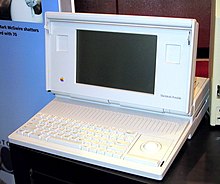

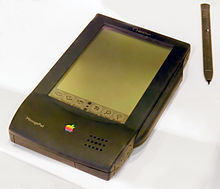


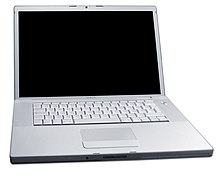



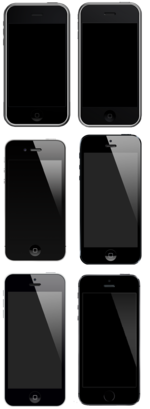


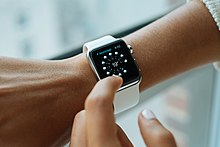

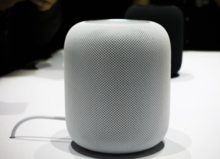

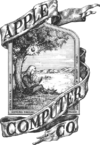
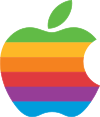



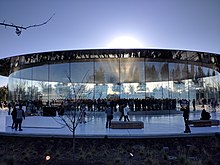


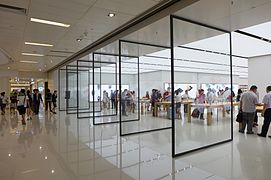



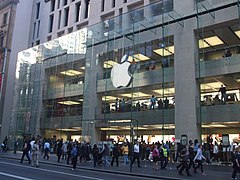
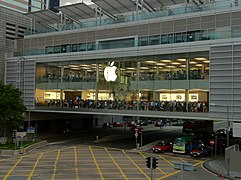

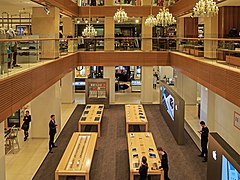
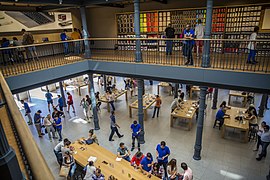
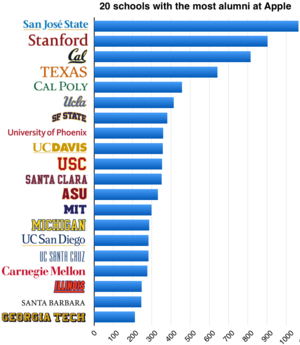
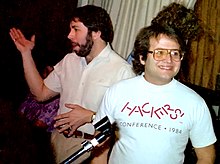
ConversionConversion EmoticonEmoticon